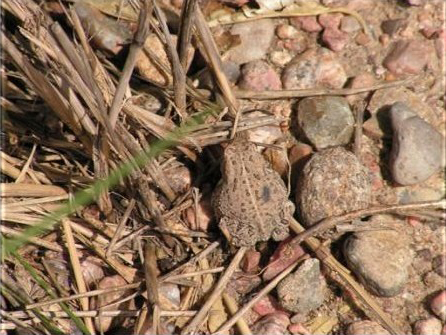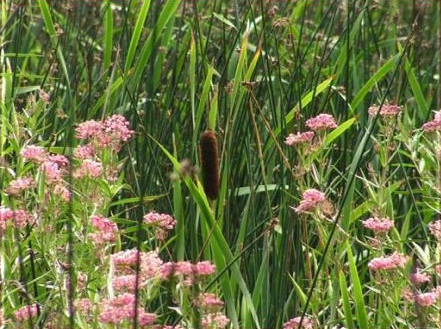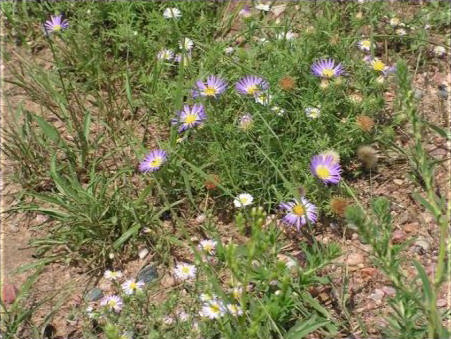Nature and wildlife abound at this oasis.
Wildlife
Visitors to Jackson Lake might see white-tailed or mule deer, coyote, red fox, cottontail rabbit, black-tailed jackrabbit and fox squirrel. In the winter, bald eagles are visible perched in cottonwoods and soaring over the reservoir. Large numbers of American white pelicans descend upon the lake in the summer. Due to its location in the Central Flyway many migratory birds visit Jackson Lake.
Birders travel to the region because of the abundance and diversity of bird species. Long-billed curlews and whooping cranes are occasionally observed. Ferruginous and rough-legged hawks are present in the winter, while Swainson’s hawks return for the summer months.
Northern harriers fly low over wetlands and grasslands. Ground-nesting grassland birds such as horned larks, lark buntings, western meadowlarks and vesper sparrows may breed in the park in the spring.
See the
Jackson Lake Bird Checklist.
 Amphibian and reptile species in the park include the painted turtle, snapping turtle, six-lined racerunner, plains garter snake and bullfrog. Nonnative, predatory bullfrogs may contribute to declines in amphibian populations native to Colorado. Plains spadefoot toad, lesser earless lizard and western hognose snake are restricted to grasslands and sandhills. These species use rodent burrows for cover or to dig out prey.
Amphibian and reptile species in the park include the painted turtle, snapping turtle, six-lined racerunner, plains garter snake and bullfrog. Nonnative, predatory bullfrogs may contribute to declines in amphibian populations native to Colorado. Plains spadefoot toad, lesser earless lizard and western hognose snake are restricted to grasslands and sandhills. These species use rodent burrows for cover or to dig out prey.
Anglers are attracted by the fishing opportunities at Jackson Lake, which include rainbow trout, walleye, saugeye, wiper, yellow perch, crappie, freshwater drum, common carp and channel catfish. To learn more, download the Jackson Lake Fishing Brochure.
For additional fishing information, visit the
CPW Fishing page.
Plants
 Short grass and mixed grass prairie communities cover the park’s uplands. Vegetation composition consists of species tolerant of clay and sandy soils and drought. The dominant grassland species in clay soils include blue grama, needle-and-thread grass, western wheatgrass, buffalo grass and thread leaf sedge.
Short grass and mixed grass prairie communities cover the park’s uplands. Vegetation composition consists of species tolerant of clay and sandy soils and drought. The dominant grassland species in clay soils include blue grama, needle-and-thread grass, western wheatgrass, buffalo grass and thread leaf sedge.
On sandy soils, prairie sandreed grass, sand and little bluestem, sandhill muhly, sand dropseed and indian ricegrass are the dominant species. Some shrub invasion of grasslands has occurred by sand sagebrush, yucca and prickly-pear cactus.

Diverse wetland, riparian and aquatic plant communities have become established around the reservoir, below the dam and on large seeps that exist below distribution canals. One rare plant species, the showy prairie gentian, is known to occur in the park.
Geology
The landscape around Jackson Lake is covered by pleistocene and recent eolian sand and silt, deposited as dunes, blown from the South Platte River basin. Sandhills rest on shales of upper cretaceous pierre formation, which outcrop north of the park boundary.

